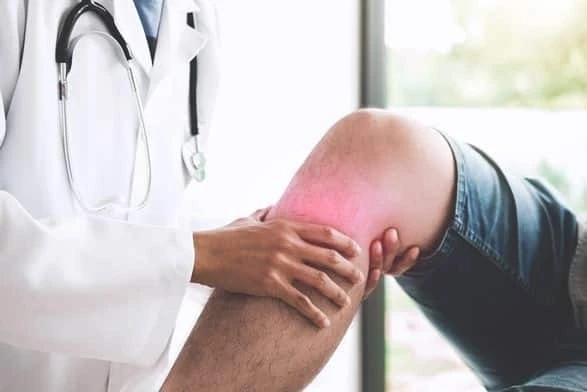It\'s possible to experience a serious knee injury during athletic activity even when there hasn\'t been any contact with another person. Pivoting beyond where the joint normally extends may lead to a sprain or soft tissue tearing. Landing awkwardly also can cause an injury. It\'s even possible to tear both the anterior and posterior cruciate ligaments at the same time. The patient may be advised to wear Mueller braces and supports until healing is complete.
About the Ligaments
The anterior cruciate ligament (ACL) and posterior cruciate ligament (PCL) are situated in the middle of the knee under the kneecap, medically known as the patella. These ligaments, along with two others, are attached to the thigh bone and the shin bone. The ACL is the main source of stability for the knee.
Injury Types
Knee ligament injuries are relatively common in athletes, but usually these bands of tissue become sprained due to overstretching rather than tearing. A small tear results in mild to moderate pain that gradually decreases in discomfort level to an aching sensation. Some individuals experience very little discomfort.
A full tear typically causes excruciating pain, and the knee is unstable. The person will be unable to bear weight on that leg because the joint will buckle. Someone with a small knee ligament tear may be able to walk a short distance immediately after the incident or might need to wait until the swelling decreases. Compression sleeves and hard braces provide support for a joint that\'s unstable.
Diagnosis and Treatment
Doctors diagnose the severity with magnetic resonance imaging. Minor tears can heal with the right support and proper care of the joint. Very minor tears are technically considered sprains. Immobilization may be necessary, and the person might have to restrict physical activity. Surgery is required for more serious cases. When the soft tissue has completely separated from the joint, it is considered a ruptured ligament.
Individuals who are usually not physically active and do not plan to be may be able to manage a moderate tear without surgery. Those who are more athletic will need the operation to continue with their usual pursuits.
Support Devices
The type of brace or other support worn depends on the nature of the injury and the activities the person will be engaging in. Doctors and physical therapists want patients to be standing up and walking at least a short distance relatively soon after surgery. These healthcare practitioners will recommend the best knee braces and supports for each patient.



